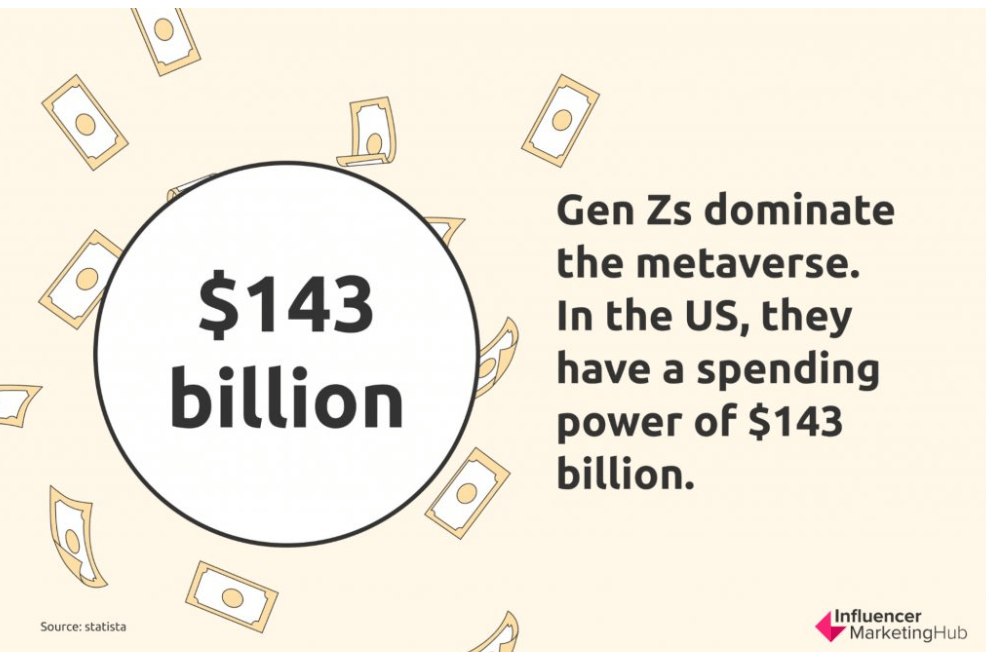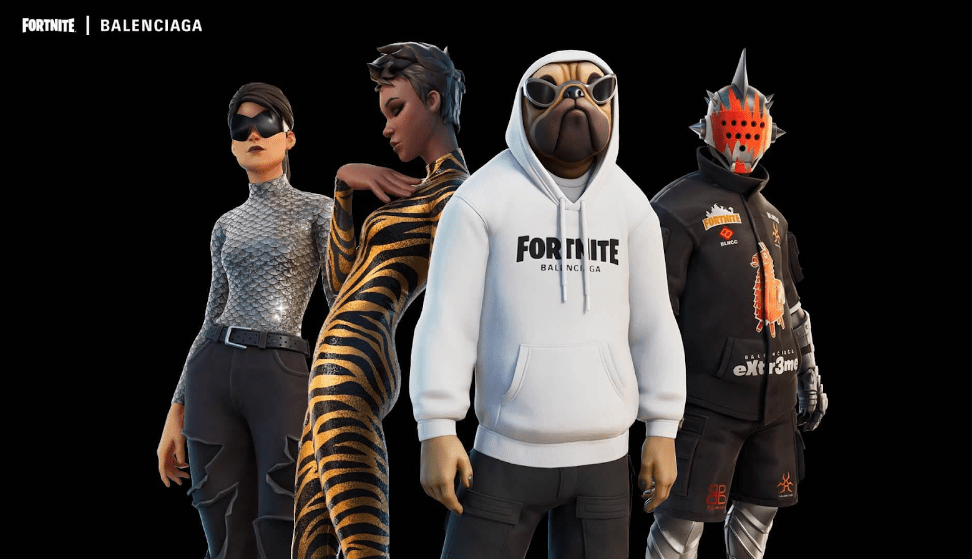Is your business ready for the future? Learn how virtual marketing will impact the overall business landscape.
According to the CEO of Meta, the Metaverse has become an “embodied internet,” allowing all users to blur the lines between real-life and virtual experiences in a large immersive playground.
It’s no secret that the metaverse is expanding. With a market size expected to exceed $800 billion by 2024, more people are entering a new digital domain than ever.
With more consumers in the metaverse comes more opportunities for marketers across the globe. Following the same path as the social media advertising boom, the metaverse has now become a key destination for consumer targeting, especially if you’re working with a Gen Z demographic.
After the popular metaverse platform, Roblox surpassed 200 million active users in 2022, it has become one of many digital destinations that are now ripe for hyper-targeted campaigning. From live virtual concerts to branded gamification, the possibilities for creative branding are endless in an immersive space.
The question is, just how many businesses are taking advantage of virtual marketing in 2023? Let’s find out.
A New Demand For Immersive Marketing
Is there a new demand for immersive marketing? As users become more comfortable with digital advertising and creative social campaigns, it’s no wonder that they now demand more from their favorite brands.
From personalized ads to interactive content, marketers must think outside the box to keep their digital consumers interested in a competitive climate.
“Consumer behaviour has changed as a result of the digital age. More individuals are using the internet to learn, work, play and shop,” claims Jayant Chaudhary, CEO at JLB, USA. “The metaverse promises and promotes a "phygital" (physical and digital) solution. It aims to alter how we perceive the world by blurring the boundaries between real life and virtual reality. The metaverse presents a fantastic opportunity for businesses to target and reach new audiences, increase consumer confidence and explore a new revenue stream.”
Reaching a Gen Z audience is tricky. They are incredibly hard to please, and remain experts in a digital space. With the ability to offer consumers virtual products, experiences, and digital collectibles, the metaverse gives marketers the opportunity to connect with a Gen Z audience on a hyper-realistic level in a way that social media ads can’t come close to.
Better still, Gen Z alone has enormous spending power in the metaverse, making the digital world a perfect place to drop new product campaigns.

With a spending power of $143 billion, it’s no wonder that brands such as Gucci and Balenciaga are already dominating popular platforms such as Roblox and Fortnite with product placement, NFT collectibles, and advergames.
The great thing about the metaverse is that it is open to users of all ages, interests, and backgrounds, meaning that the landscape for brand targeting is ripe. Allowing users to appear in a digital space as an ‘avatar’ version of themselves, the metaverse has bred a demographic of authentic consumers that are upfront and outspoken about their niche interests. This makes it easier than ever to find groups of potential leads for personalized product launches and targeted campaigns.
However, as marketers navigate their way through the metaverse, what types of content should they prioritize if they want to see success?
Introducing Hyper-Realistic Experiences
One of the easiest ways to target metaverse consumers is to provide them with an immersive in-platform experience.
By 2025, a whopping third of the population will be confident users of AR and VR devices. Therefore, to create a campaign that leaves an impression on your leads, it could be time to delve into virtual experience marketing, and incorporate this technology when you create a website. We’re talking virtual tours, AR fitting rooms, brand gamification, virtual product samples, and immersive showrooms. Show your consumers that they don’t have to leave their houses to experience your products and services.
Take Gucci Garden as an example. Debuting on the Roblox platform, Gucci took the marketing of their newest clothing line one step further, presenting their pieces in an all-immersive VR experience.

“As they enter the Gucci Garden experience, visitors will shed their avatars, becoming a neutral mannequins. Without gender or age, the mannequin symbolizes that we all begin our journeys through life as a blank canvas,” say developers at Roblox. “Wandering through the different rooms, visitors’ mannequins absorb elements of the exhibition. With every person experiencing the rooms in a different order and retaining different fragments of the spaces, they will emerge at the end of their journey as one-of-a-kind creations, reflecting the idea of individuals as one among many, yet wholly unique.”
After launching in 2021, the Gucci Garden experience saw 20 million visitors and, in turn, boosted brand buzz and even on-site engagement.
Targeting Gen Z consumers with gamified branding allowed Gucci to advertise its values, newest patterns, and designs while appealing to the demands for interactive and personalized experiences in the metaverse.
Leveraging Personalization
On the topic of personalization, the metaverse has quickly become a hub for all things customizable. A whopping 92% of metaverse consumers value personalization in creating their metaverse avatars. This has allowed brands to target a new demand for self-expression, especially within the fashion industry.
Take Balenciaga, for example. Instead of simply placing their digital products within the metaverse, they partnered with the gaming platform Fortnite to offer players customizable virtual outfits to personalize during play.

As the direct-to-avatar (D2A) economy grows, companies like Balenciaga can now sell virtual products directly to avatars. Introducing a range of digital clothing designs and accessories that can be customized upon purchase allows consumers to enjoy self-expression still.
Balenciaga, for example, has not only seen success in selling digital clothing, but after seeing engagement amongst a Fortnite-focused audience, the high fashion house has since released a physical ‘Fortnite inspired’ clothing line that consumers can purchase in real-life.
Will Consumer Targeting Evolve?
According to Mckinsey, 75% of consumers have adopted new shopping behaviors since the birth of the pandemic. With more online shoppers relying on digital platforms for their product placement and brand engagement, consumer targeting has evolved in the last three years.
However, as virtual marketing becomes more popular than ever before, the metaverse could inspire a new era of hyper-targeted campaigning. Taking advertising and turning it into a hyper-realistic brand experience, the metaverse has certainly upped the stakes for e-commerce giants across the globe.
“The bottom line is that with the right mix of creativity, research, and planning, the metaverse—whether on Roblox or another popular platform—is fertile ground for expanding almost any brand’s reach to a multinational audience,” claims Justin Cook, President of Internet Marketing & Development at 9thCO.
The question is, where will consumer attention turn to next? Will more consumers shop in a virtual high street, or will gamified retail experiences only appeal to younger digital natives? Only time will tell.